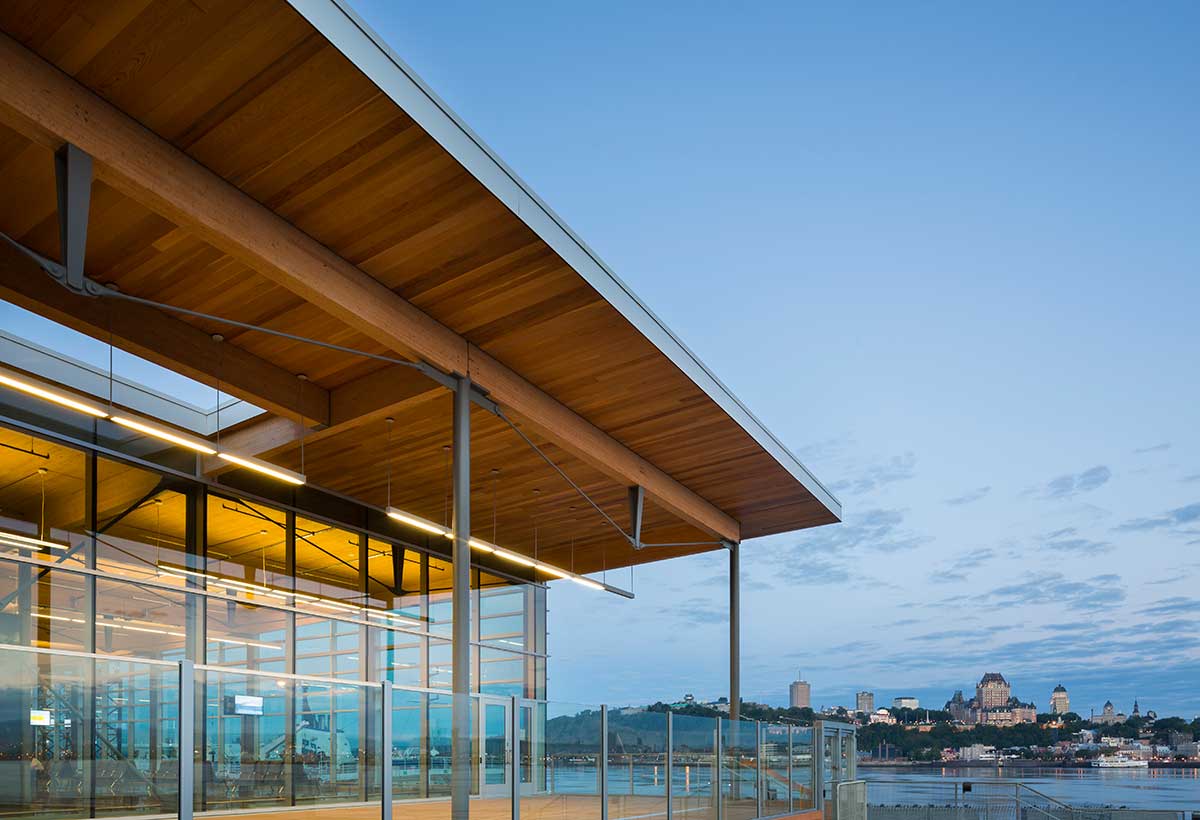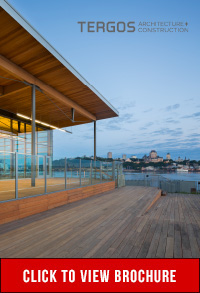Creating Green Designs For a Greener World
Despite its classical roots, the word ‘Tergos’ is a creation of the 21st century. It stems from the words terra and ergos, which mean earth and work, respectively. It describes perfectly what Tergos Architecture and Construction is doing every day in Quebec City: working with the earth. The company’s president, Alejandro Montero, invented the name during his university days while he was studying architecture.
In his youth, Montero had a passion for architecture, but like most teenagers, he diverted from that route. But life for him was a loop; what was lost came back, and in his late 20s, he returned to school to pursue higher education in architecture. His previous travels around Western Canada and Europe greatly influenced his decision to specialize in green architecture.
“This is how I would marry my profound ideas on the environment to how humans should be creating a better environment,” Montero said. His key question was how can we inhabit a more beautiful planet. In fact, it became his mission. Remarkably, he founded Tergos immediately after university in 2001. While most would be completing internships or finding work at firms before venturing on their own, Montero’s story was unique simply because of the specialization he had chosen. He couldn’t find internships with other architectural firms that had the same vision for green architecture.
But founding the company was simply the tip of the iceberg in terms of challenges to come. Finding general contractors who would build green according to Tergos’ plans and designs was an especially taxing problem. The obstacle became an opportunity however and Tergos reinvented itself in 2003 as an architectural firm and a general contractor – a two-headed beast, as Montero affectionately calls it.
But more diversification was still to come. Initially, Montero was running a one-man show, but two years after, Geneviève Mainguy, the present head of the architecture department and Montero’s wife, joined the company. Another two years later, Tergos was operating in full gear as the construction unit was incorporated when Yann Grenier joined the team as worksite superintendent. From this initial trio emerged a workforce of 20 people, with Sébastien Gaudreault recently joining as head of construction.
With 15 years of service under its belt, Tergos offers turnkey services in the areas of architecture, construction and real estate. Working in the urban environment is the company’s specialty. The vast majority of its projects centre on residential services, which includes both single family homes and large multi-residential homes, like apartments and condominiums. Tergos has a particular affinity towards wood technologies, especially engineered wood structures, such as CLT (cross-laminated timber).
In 2016, Tergos further expanded into real estate, buying land in urban settings. This year the company will be building its first multi-family home in downtown Quebec City. “We like the idea of densifying urban areas instead of contributing to urban sprawl,” Montero said.
Tergos has contributed to the non-residential landscape of the area as well. Lévis is a city that sits right across the St. Lawrence River from Quebec City. There is a ferry that connects the oldest portions of both cities, so that tourists and Quebecois alike can take in the beauty of the region from the water. The biggest project Tergos has completed so far involved the erection of the entire wooden structure of the ferry station, including a CLT roof.
The pillars of green architecture
“The construction industry is a dog-eat-dog industry. It’s a tough industry to work in, because it’s easy to get fleeced,” Montero said, which is why Tergos firmly believes that even construction can be done in an ethical and environmentally friendly way. To do this, the company developed seven strategies for ecological building that focus on quality, design, topography, materials and energy efficiency.
The first pillar is quality in everything from the design process to materials and construction. “We have to design quality. We have to build quality. Essentially, when you build something better it will last longer,” Montero said. Lasting structures indubitably result in less waste and resource expenditure in the long run.
The second strategy ensures that the design is bioclimatic in nature. The location of the building and its orientation and position are used to construct structures that warm up during the winter and cool down during the summer. The third pillar integrates topography and geography into the design, whether it be a highly urbanized street, a mountainous region or an area with an abundance of forest.
Following this is materials procurement. “The choice of materials is really important. We choose local materials,” Montero said. “We want to stimulate the local economy as much as we can. With the global economy that we have today everybody does business with everybody else, but when we work in a locality or municipality we will want to use the most local materials possible.” Additionally, natural and healthier materials that are or can be recycled are preferred by Tergos.
The next criterion is energy efficiency, a topic that people are generally very knowledgeable about nowadays, but Montero says, “A lot of people in this world mistake energy efficiency for green architecture. It is an important part of green architecture, but an energy-efficient building does not mean that it is a green building.” Incorporating the pillars outlined here into the design and construction processes is what creates a truly green building.
Tergos’ last pillar focuses on the human experience that accompanies every building. “It’s all about aesthetics, it’s about comfort,” explained Montero. “Architecture is supposed to serve humanity. It’s not supposed to be the other way around.” This is why Tergos pays special attention to how the people who will be using a building will feel within the space.
This formula has not only helped Tergos carry out its ecological mission, but grow substantially. For the past five years, the company has been consistently expanding. This year alone, Tergos experienced a 20 per cent growth in its revenues.
“We believe in what we do. We are a company with a mission and we believe in that mission,” Montero said. The mission alone makes Tergos rather unique in the industry. Although green architecture has become increasingly prevalent in recent times, Tergos is one of the only companies that focuses exclusively on green architecture.
“A lot more people are doing it and that is a good thing. Eventually everything is going to be green. Humanity doesn’t have a choice. It’s not even a question of the Earth, it’s a matter of human survival,” Montero said, adding that Europe is decades ahead of Canada in this aspect. His travels aboard have been both informative and inspiring, and have shaped the future direction of his company.
Although Tergos is relatively young, Montero has big plans. His vision is to expand into Montreal, a city that already employs Tergos’ services often. Expanding east and west from Quebec City and even down south to New England is on the table for Montero.
“We are a climate-based company,” he explained. “Our specialties in green architecture centre on northern climates, not deserts and dry areas. I’m looking forward to expanding worldwide in those same climates.”







